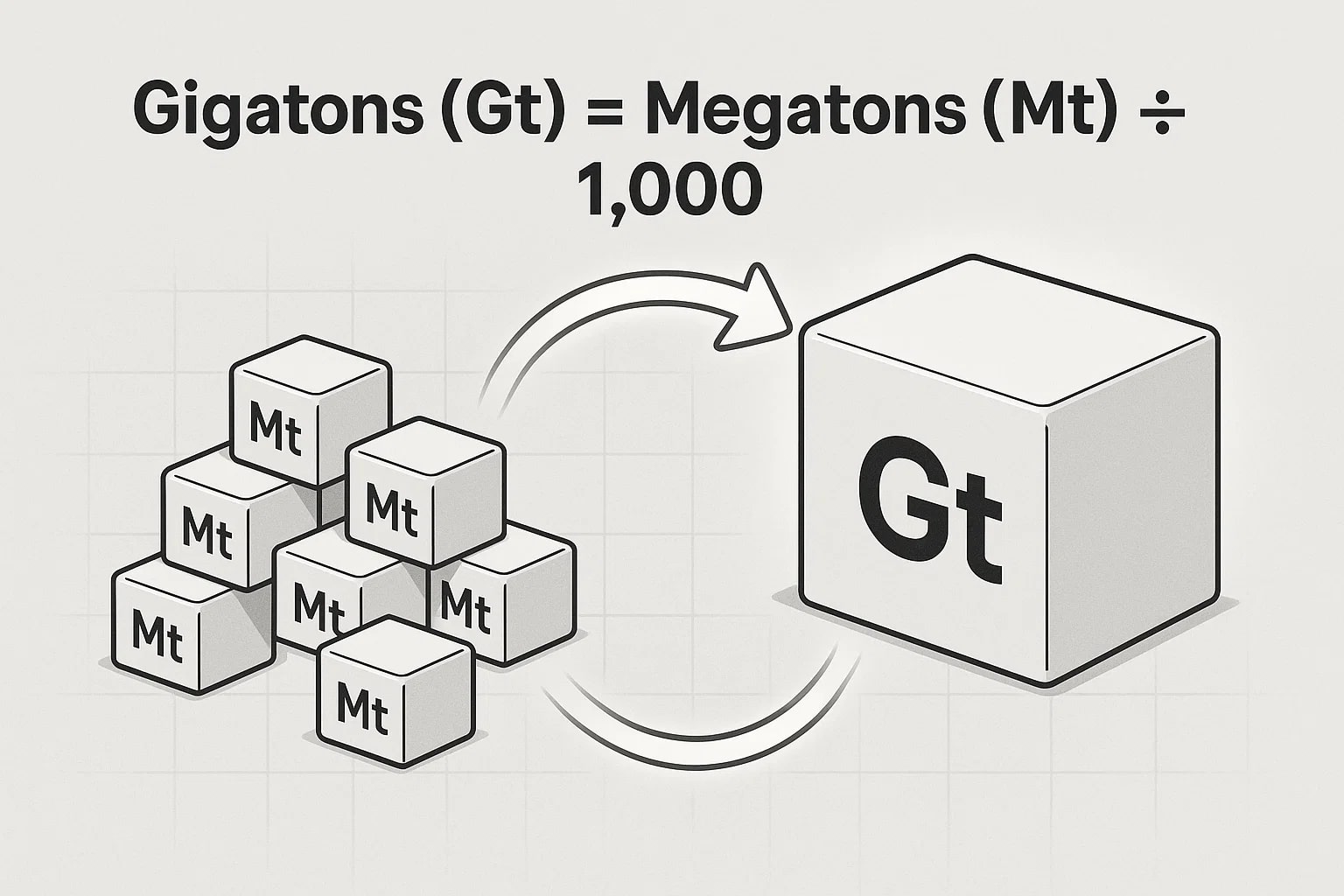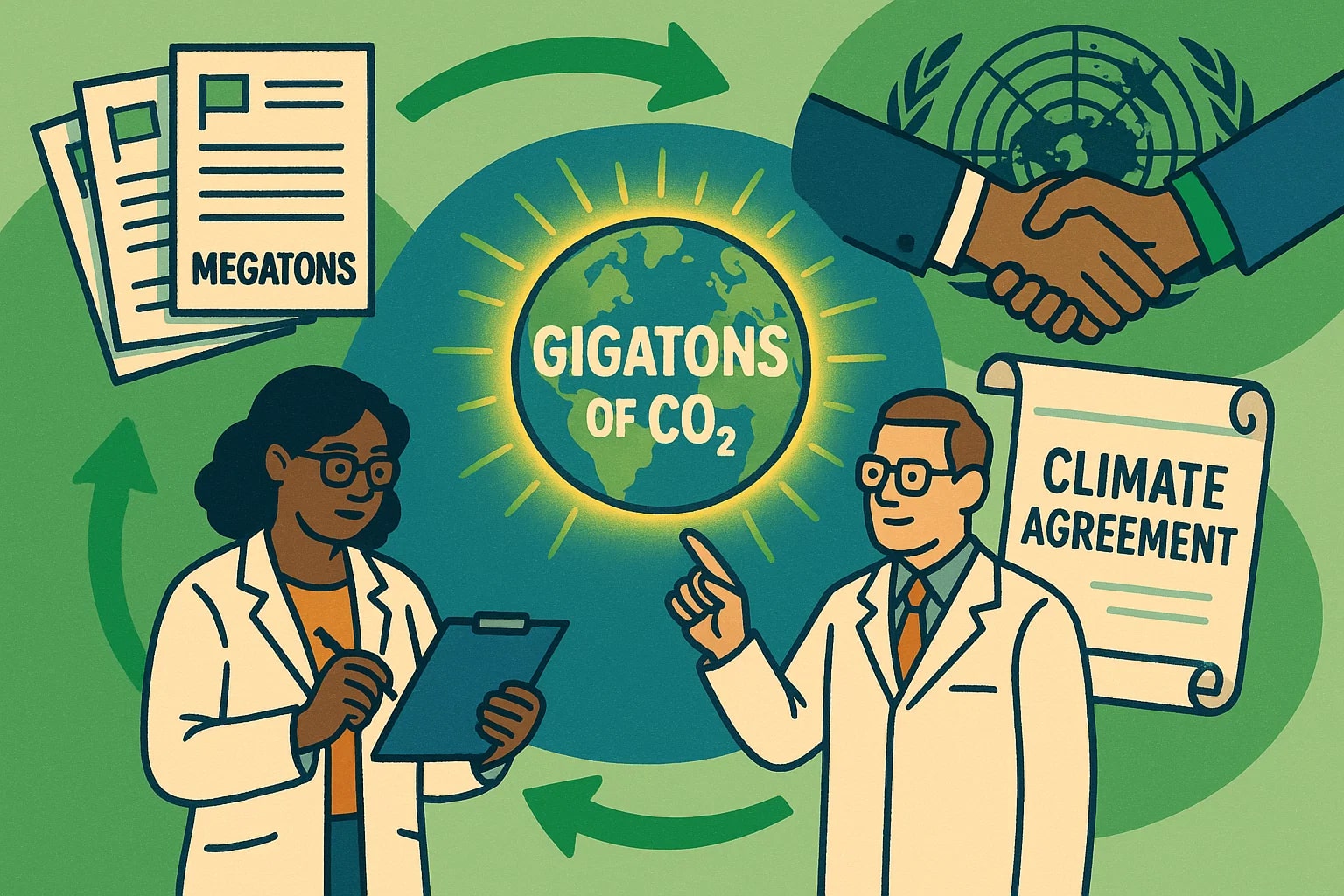Megaton to Gigaton – How to convert Mt to Gt
The conversion between megaton and gigaton comes up when working with massive figures — from global carbon emissions to glacial ice loss and even historical nuclear yield calculations. These two metric-based units are often used in climate science, energy studies, and large-scale industrial reports. Here’s how to make the conversion, why these units matter, and where official reports rely on them.

What is a megaton (Mt)?
A megaton equals 1 million metric tons (1 × 10⁶ tons). Beyond mass, it’s also a unit of energy equivalence in nuclear science: one megaton of TNT equals about 4.184 petajoules (4.184 × 10¹⁵ joules).
Megatons are frequently seen in:
-
Nuclear yield estimations (Cold War-era weapons testing records).
-
National greenhouse gas inventories, where individual sectors often report emissions in megatons before being scaled up globally.
-
Energy sector reports, such as coal production and consumption statistics, before conversion into larger gigaton totals for international comparisons.
What is a gigaton (Gt)?
A gigaton equals 1 billion metric tons (1 × 10⁹ tons), or 1,000 megatons. This unit is standard in global reporting, especially for:
-
Annual CO₂ emissions (reported by the Intergovernmental Panel on Climate Change).
-
Glacial and ice sheet monitoring, where agencies like NASA’s GRACE satellites track changes in gigatons per year.
-
International energy and resource studies, where using gigatons simplifies cross-border comparisons.
How to convert megaton to gigaton
The relationship is simple:
1 gigaton = 1,000 megatons (1 Gt = 1,000 Mt)
Formula:
Gigatons (Gt) = Megatons (Mt) ÷ 1,000
Example:
According to Global Carbon Project data, global CO₂ emissions in 2022 reached about 37,000 megatons. Converting:
37,000 ÷ 1,000 = 37 Gt of CO₂
To handle these conversions quickly across energy or environmental data, use our Energy Converter or check out more Conversion tools for accurate results.
Did you know?
-
The IPCC Sixth Assessment Report (2021) noted that global CO₂ emissions surpassed 36 gigatons annually, with most countries initially reporting in megatons before data was standardized for international use.
-
The National Snow and Ice Data Center reported that Antarctica lost nearly 150 gigatons of ice per year between 2002–2020, measured by GRACE satellites – each reading originally calculated in smaller mass units before conversion.
-
During the Cold War, the largest nuclear device ever detonated, the Soviet Tsar Bomba (1961), had a yield of 50 megatons, but strategic assessments often extrapolated potential cumulative yields into gigatons to understand total destructive potential.
-
In International Energy Agency reports, fossil fuel extraction volumes (coal, oil, natural gas) are tracked in megatons for production but converted to gigatons when analyzing global reserves and climate targets.
How Global Climate Targets Depend on This Conversion
When negotiating the Paris Agreement (2015), emissions data from over 190 countries had to be unified. Most national greenhouse gas inventories were structured in megatons, but to model global temperature scenarios and track shared limits, scientists converted everything into gigatons.
According to records from the United Nations Environment Programme (UNEP), this standardization allowed negotiators to set a collective target: keeping cumulative emissions below a threshold measured in gigatons of CO₂, directly tying global totals to projected warming levels.
Without this shared scale, aligning national contributions with planetary goals would have been nearly impossible.

Bringing It All Together
Converting megaton to gigaton is straightforward — divide by 1,000 — but it’s critical for scaling local or national data to the global stage. From climate reporting and glacial studies to energy and defense records, this conversion keeps science, industry, and policy aligned on a single, consistent scale.
For quick and precise results, use our Energy Converter or explore more Conversion tools for any large-scale calculations.

